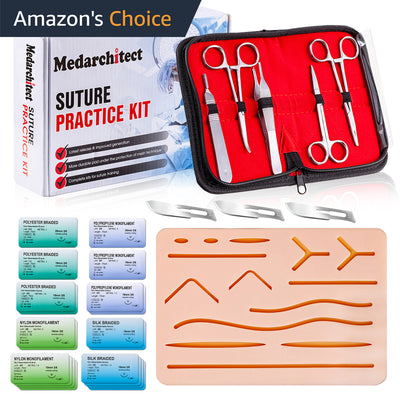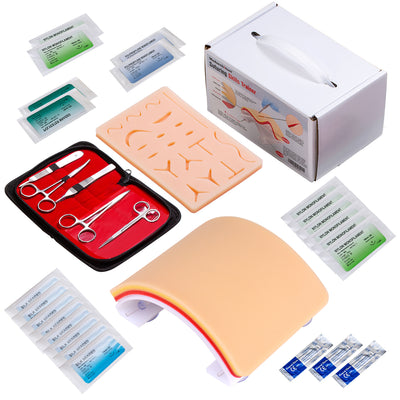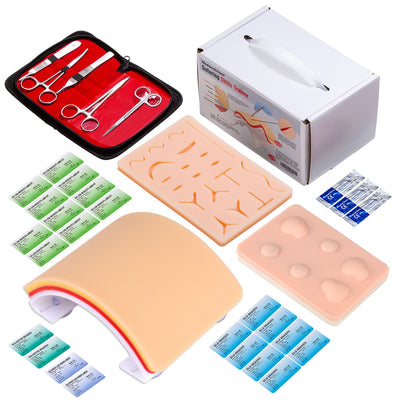In various medical settings such as emergency resuscitation, surgical procedures, and intensive care, ensuring that the patient's airway remains open is the top priority for saving lives. Airway management is not only a basic skill for medical staff and emergency responders, but also relies on the support of various specialized equipment.
This article will introduce commonly used airway management equipment to new medical professionals, helping you understand their roles and applications in actual clinical settings and prepare you to handle real-life cases. This section will focus on five major categories of devices:
- Face Mask Ventilation
- Supraglottic Airway Devices
- Tracheal Intubation
- Airway Clearance
- Support and Monitoring Devices
1. Face Mask Ventilation
Face Mask Ventilation is primarily used to provide artificial respiratory support when a patient is unable to breathe independently or has stopped breathing. It is commonly used during anesthesia induction, cardiopulmonary resuscitation, and emergency airway management at the scene of an emergency. It is the most basic and commonly used ventilation method in clinical and emergency settings, capable of rapidly ensuring oxygen supply and airway patency for patients prior to tracheal intubation or when intubation is difficult.
- Bag-Valve Mask (BVM): Also known as a manual resuscitation bag, provides artificial ventilation to patients by manually squeezing the bag, assisting their breathing or maintaining oxygen supply.
- Face Mask: Used in conjunction with a BVM to provide gas delivery and assisted ventilation by covering the patient's mouth and nose.
When performing face mask ventilation, ensure that the mask is properly sealed to the face, the airway is kept clear, and control the ventilation pressure and speed to avoid air leakage and overventilation.
2. Supraglottic Airway Devices
Supraglottic airway devices cover the structures above the pharynx and larynx to help ensure smooth airflow into the lungs. They are often used when effective ventilation via a mask is not possible or tracheal intubation is temporarily not feasible.
- Laryngeal Mask Airway (LMA): It consists of a mask with an inflatable cuff and a connecting tube. The LMA is easy to insert and does not enter the trachea, making it especially useful in cases of difficult intubation.
- I-gel: A supraglottic airway device without an inflatable cuff. It quickly conforms to the patient’s pharyngeal anatomy to create a sealed airway passage.
- King Laryngeal Tube (King LT): A blind insertion airway device composed of a tube with two cuffs. Once inserted, the upper and lower cuffs seal the pharynx and esophagus respectively, helping prevent aspiration and ensuring effective ventilation.
Supraglottic airway devices are easy to use and quick to insert, effectively maintaining airway patency and reducing the risk of intubation failure. However, they do not provide complete airway protection and carry risks of aspiration and local injury. Not suitable for patients with anatomical airway abnormalities or those requiring complete airway control.
3. Tracheal Intubation
The pathway for Tracheal Intubation typically involves insertion through the oral airway (OPA) or nasal airway (NPA), passing through the pharynx, and then through the vocal cords of the larynx into the trachea.
Common tools:
- Oropharyngeal Airway: Used in OPA. Oral Intubation involves inserting the tube through the mouth, passing the pharynx and vocal cords to reach the trachea.
- Nasopharyngeal Airway: Used in NPA. Nasal Intubation involves inserting the tube through the nostril and is used when oral intubation is not possible due to mouth injuries or other limitations.
- Endotracheal Tube (ETT): The most commonly used tracheal tube. For OPA, ETTs with an inflatable cuff are generally chosen to effectively seal the airway. For NPA, thinner and more flexible tubes are preferred to facilitate passage through the nasal cavity.
- Video Laryngoscope: Used in conjunction with OPA. Equipped with a camera, it provides a clearer view of the airway, improving the success rate of intubation.
- Stylet: Assists the tube in maintaining an appropriate curved shape to facilitate smooth insertion into the trachea.
- Flexible Fiberoptic Bronchoscope: Used for difficult airways or special cases, it helps guide the tube through the nasal cavity and vocal cords during intubation.
Tracheal intubation is a highly technical procedure that carries risks such as intubation failure, airway damage, and infection, and should only be performed by trained medical professionals.
4. Airway Clearance
Airway clearance is mainly used to remove secretions, foreign bodies, or liquids that obstruct the airway to ensure airway patency and effective ventilation. Commonly used tools include:
- Suction Machine: Uses negative pressure to remove mucus, blood, and vomit from the mouth, pharynx, or airway.
- Suction Catheter: Used with the suction machine, inserted deep into the airway for targeted suctioning.
- Yankauer Suction Tip: Commonly used to clear secretions from the mouth and pharynx; its rigid design is suitable for removing larger amounts of secretions.
- Endotracheal Suction Catheter: Used to suction secretions inside the trachea to prevent blockage and infection.
The most common problems during airway clearance are hypoxemia and airway mucosal injury. Suctioning time should be limited to 10–15 seconds, with oxygen supplied beforehand if necessary. At the same time, use appropriately sized, soft suction catheters and avoid excessive force to reduce the risk of bleeding and irritation.
5. Support and Monitoring Devices
- Cuff Pressure Gauge: Measure and adjust the pressure inside the cuff of an endotracheal tube or laryngeal mask airway.
- Capnography/CO₂ Detector: Detects and displays the concentration of carbon dioxide (CO₂) in exhaled air, helping confirm endotracheal tube placement and monitor ventilation effectiveness.
- Pulse Oximeter: Non-invasively monitors blood oxygen saturation (SpO₂) and pulse rate to assess oxygenation status.
Conclusion
Airway management is a vital skill in patient rescue, and understanding and properly using various equipment is key to maintaining a clear airway. This article aims to help you quickly become familiar with these common tools. It is recommended to practice repeatedly with airway management trainers to improve your skills and confidence, which allows you to handle emergencies calmly and protect patients’ lives more effectively.











